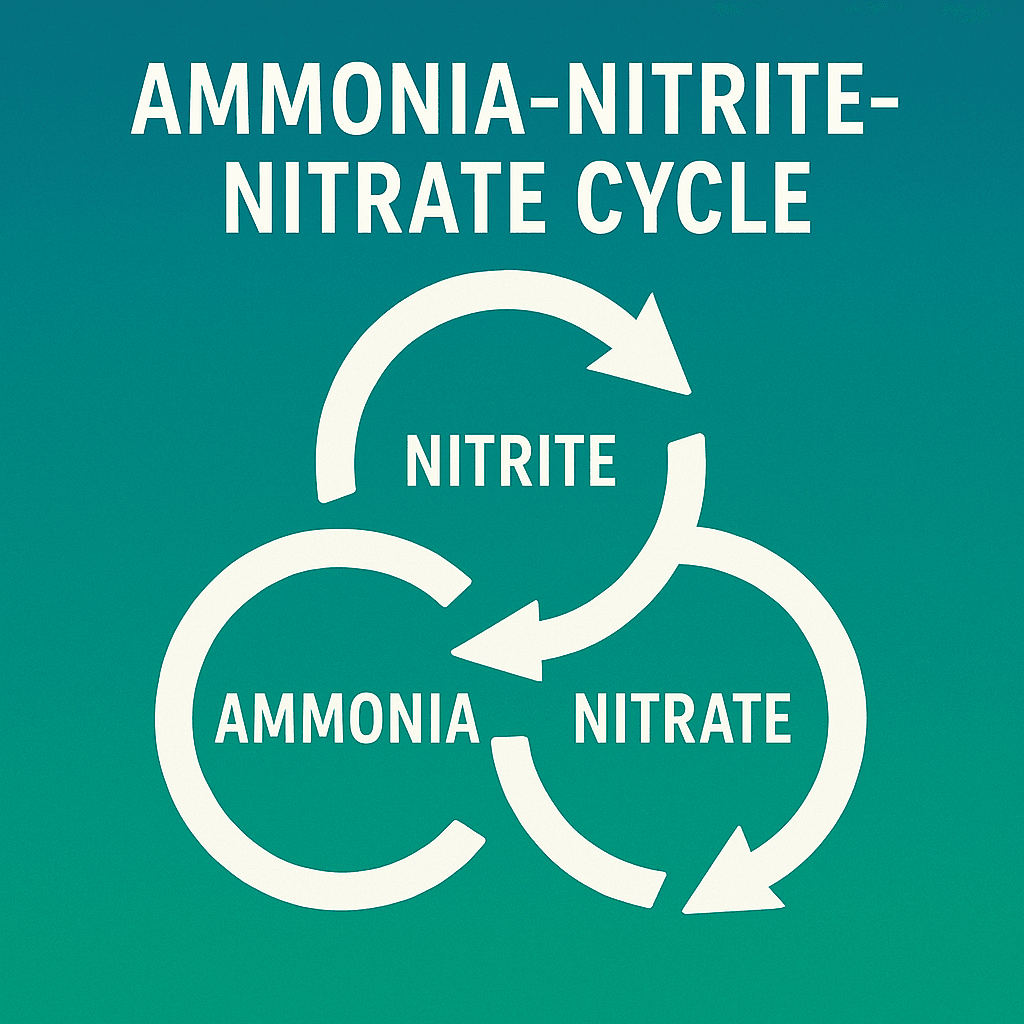
Aquarium Nitrogen Cycle Guide: Master the Ammonia-Nitrite-Nitrate Process
If your aquarium is cloudy, your fish are acting stressed, or your new setup just isn’t stable — there’s a good chance the nitrogen cycle is incomplete or mismanaged. The nitrogen cycle, also known as the ammonia-nitrite-nitrate cycle, is the biological foundation of every successful aquarium. Understanding it isn’t just important — it’s essential.
In this detailed guide, we’ll walk through what the nitrogen cycle is, how to set it up properly, and how to troubleshoot it when things go wrong. Whether you’re new to fishkeeping or need a deeper understanding of water chemistry, this guide will give you the clarity and tools to keep your fish happy and healthy.
🌊 What Is the Aquarium Nitrogen Cycle?
The nitrogen cycle refers to the biological process that converts toxic fish waste (ammonia) into less harmful substances (nitrate) through the activity of beneficial bacteria. This cycle is critical because ammonia and nitrite are highly toxic, while nitrate is much less harmful in small amounts.
- Step 1: Ammonia (NH3) – Produced by fish waste, leftover food, and decaying matter
- Step 2: Nitrite (NO2) – Created when ammonia is broken down by Nitrosomonas bacteria
- Step 3: Nitrate (NO3) – Final product after Nitrobacter bacteria convert nitrite
This ongoing cycle keeps toxins in check and provides a stable environment for your aquatic life. Without a properly cycled tank, fish can suffer or die from toxic buildup.
🧪 How to Cycle a New Aquarium
There are two common methods for cycling a tank: fish-in and fishless. Fishless cycling is recommended for humane and controlled conditions.
Fishless Cycling
- Add a source of ammonia (pure ammonia, shrimp, or fish food)
- Test water daily for ammonia, nitrite, and nitrate
- Add bottled bacteria (like FritzZyme or Seachem Stability) to speed up colonization
- Wait for ammonia to drop to 0, nitrite to spike and drop to 0, and nitrate to rise
Fish-In Cycling
More risky for fish but sometimes necessary. Use only hardy species like zebra danios or platies and do daily water changes. Use ammonia binders like Prime or AmGuard to reduce toxicity.
🧰 What You’ll Need
- Filter with biological media (sponge, ceramic rings)
- Water conditioner to remove chlorine/chloramine
- Liquid test kit (API Master Kit is a popular choice)
- Ammonia source (pure ammonia or organic matter)
- Bottled bacteria to seed the tank
📈 Tracking Your Progress
- Days 1–7: Ammonia rises
- Days 7–14: Nitrite spikes as ammonia is converted
- Days 14–30: Nitrate appears and nitrite declines
- After cycling: Ammonia = 0, Nitrite = 0, Nitrate = 10–40 ppm
Once you reach this point, you can add fish slowly, continuing to monitor parameters regularly.
🔁 Maintaining the Cycle
Once the cycle is established, your job is to maintain it by feeding fish responsibly, doing regular water changes, and never fully cleaning your filter media in tap water.
- 💧 25–50% water changes weekly
- 🧽 Rinse filter media in tank water only
- 🧪 Test weekly for ammonia, nitrite, nitrate
- 🐟 Avoid overfeeding or overstocking
🧠 Common Cycle Problems and Fixes
- ❌ Ammonia never drops: Add more bacteria or increase oxygen
- ❌ Nitrite stalls: Ensure filter is running 24/7 and seeded correctly
- ❌ Cycle crashes: Avoid replacing filter media all at once
- ❌ Fish gasping: Indicates ammonia spike — do a water change and add Prime
🌿 Bonus: Use Live Plants to Support the Cycle
Plants can absorb ammonia and nitrate, providing biological support and stability. Great low-light options include hornwort, water sprite, and java fern. Floating plants like frogbit or duckweed are nitrate sponges.
🐠 What to Read Next
🎥 Subscribe to DBC Aquatics on YouTube to watch real cycling progress, filter hacks, and water chemistry tips in action — all designed to help you avoid the most common beginner pitfalls.